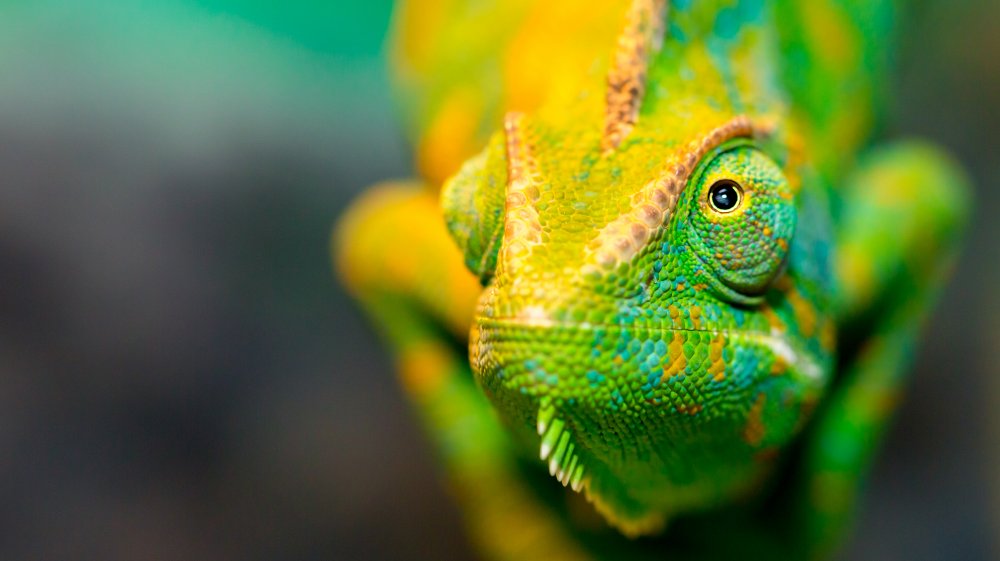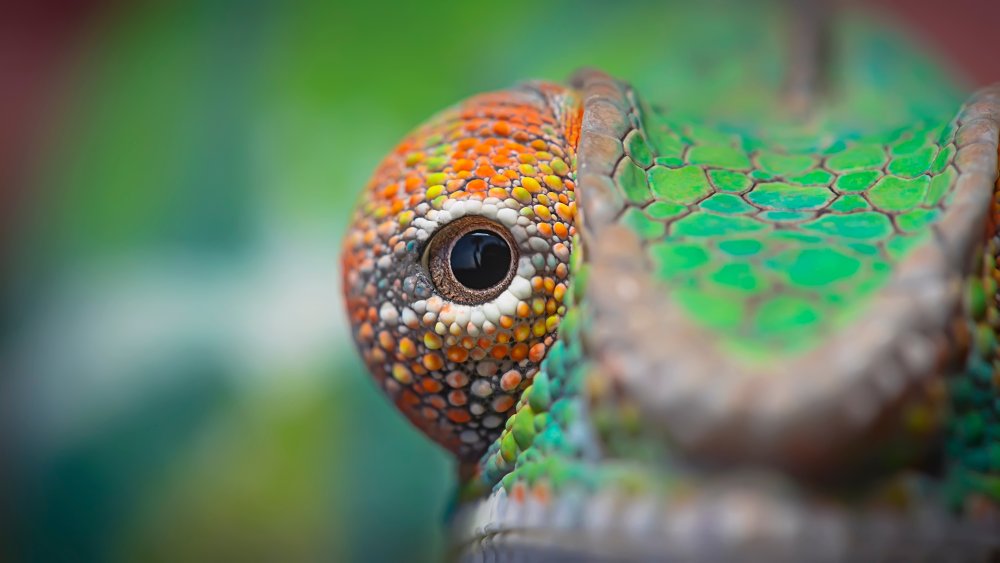The Real Reason Chameleons Change Color
Lizards are always weird little fellas, but chameleons, in particular, are some of the strangest animals alive. From their buggy eyes to their tendency to change color, these reptilian crawlers have been many a young child's favorite beast. The latter ability, of course, has become such a recognized feature of chameleons that their very name is synonymous with the tendency of some human beings to change their personalities to blend in with others — i.e., "Don't trust Ryan, he's a chameleon" — but ironically, the real reason that these bizarre creatures perform their signature superpower often isn't related to camouflage.
Karma, karma, karma, karma, karma chameleon
How chameleons change color, as explained by Wired, is rather fascinating. The external layer of a chameleon's skin is transparent, and the layers underneath that surface house cells called chromatophores, which themselves house pigment-filled sacs. Science-y words aside, the simplest way to explain this is that some sacs contain cells with a red pigments, others with a yellow ones, still others with brown, and there's one particularly vivid cell that reflects blue/white light. Now, when a chameleon's temperature or mood shifts, these chromatophores shrink or expand in such a way that the colors are turned on, resulting in wild lizard hues that look out a psychedelic music video from the sixties.
Now, chameleons sometimes do change color in order to camouflage, but for the most part, their more exciting color shifts serve a different purpose.
Chameleons change colors for crazy reasons
The primary reasons for chameleon color changes, according to National Geographic, are multifaceted and diverse. Often, rather than trying to hide, they're trying to be more visible: for example, when a male chameleon is trying to show off to the girls, his skin will shift to display vibrant, beautiful colors, as a show of masculinity. The female, then, will show her interest — or lack thereof — the same way, but reversed. If a female chameleon is being courted by a male, but she has already become pregnant by another guy, her colors will darken to match her mood. Interested females won't change their colors at all. Another primary reason for chameleonic color changes? Dominance.
Male chameleons frequently show off before showdowns. Fights are preceded by dazzling color changes, such as the more dominant chameleon becoming bright red or yellow, and thereby standing out from his environment as much as possible. Interestingly enough, one study found that for some male chameleons, if they have something better to do than engage in macho theatrics, will actually change their colors to pretend to be female, as a way to get their opponent to leave them alone.
Another fascinating use of a chameleon's abilities, most likely, is temperature control. Seeing as bearded dragons alter their skin tone to absorb heat, it stands to reason that chameleons probably do the same. So in cold, sunny days, it's likely that they'll shift to darker colors, to absorb sunlight and warm up faster. Clever lizards!


